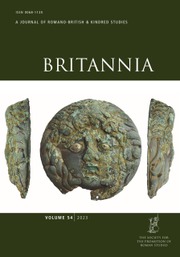No CrossRef data available.
Article contents
Intellectual Property in Developer-Funded Archaeology Projects in Britain from the Roman Period
Published online by Cambridge University Press: 07 November 2025
Abstract
As the leading journal for studies of Roman Britain for over 50 years, Britannia has proved a successful publishing outlet for papers that have arisen from the UK developer-funded archaeology sector. This level of interest should encourage the sector to submit more papers to Britannia, but it could also encourage influential journals to improve inclusivity in the publishing traditions of the sector, which are discussed in terms of a widespread failure to acknowledge intellectual property and expertise and to encourage wider involvement in analysis and publishing. The authors use three case studies from their own areas of work to illustrate current problems surrounding authorship, leadership and gendered practice. We then propose ways in which these issues could be tackled.
Keywords
Information
- Type
- Articles
- Information
- Copyright
- © The Author(s), 2025. Published by Cambridge University Press on behalf of The Society for the Promotion of Roman Studies.

